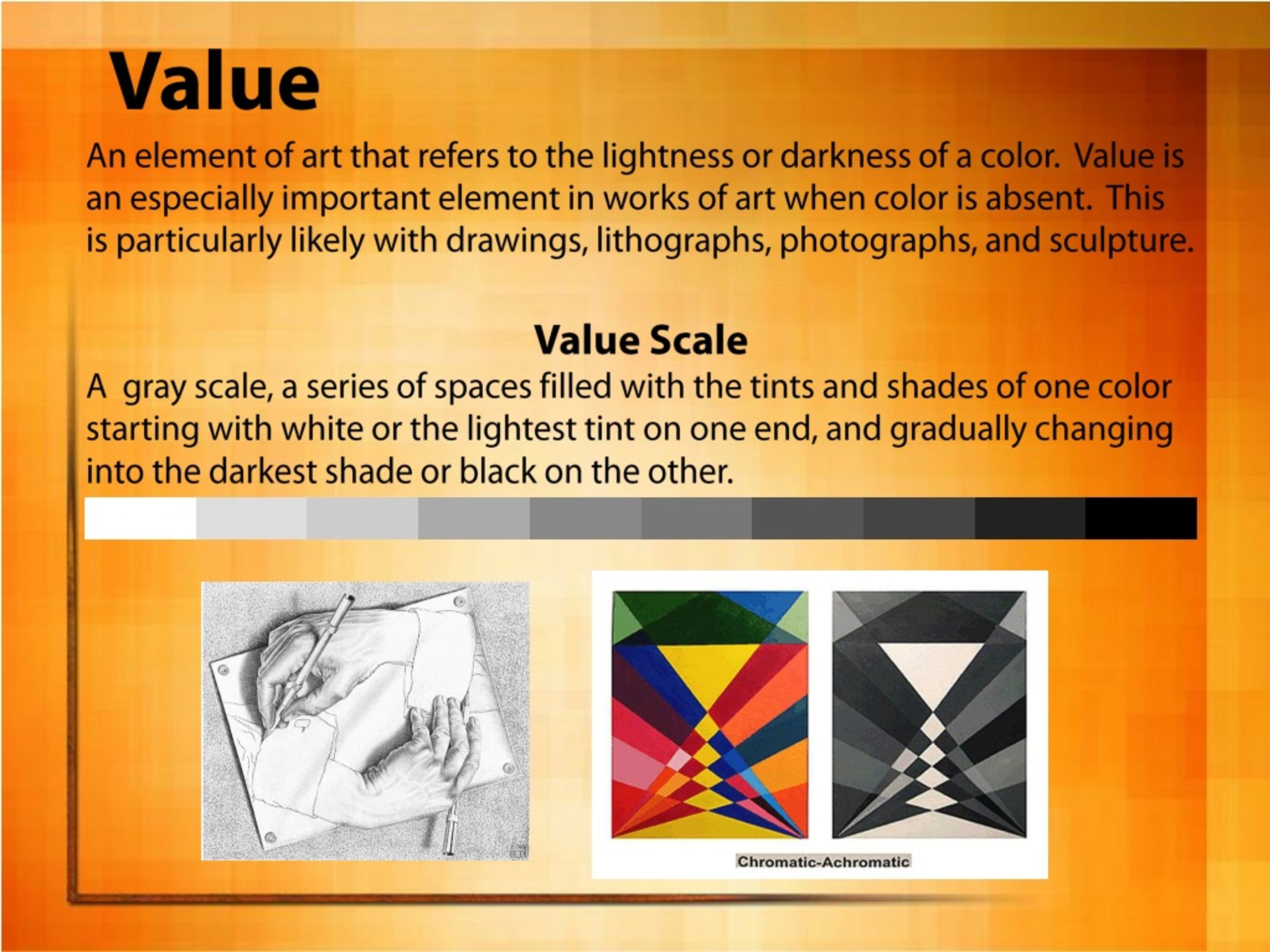
PPT The Elements of Design PowerPoint Presentation, free download
Elements of Design: Line Elements of Design: Shape Elements of Design: Form (Positive Space) Elements of Design: Space (Negative Space) Elements of Design: Color Elements of Design: Value Elements of Design: Texture What You'll Learn What are the seven elements of design? Why is it important to understand the elements of design?

Value This picture is value because the blacks and whites give it more
LINE. The most basic design element is the line. With a simple drawing a line is regarded as just a mere stroke of a pen, but in the field or study of design, a line connects any two points. Lines are effectively used in separating or creating a space between other elements or to provide a central focus.
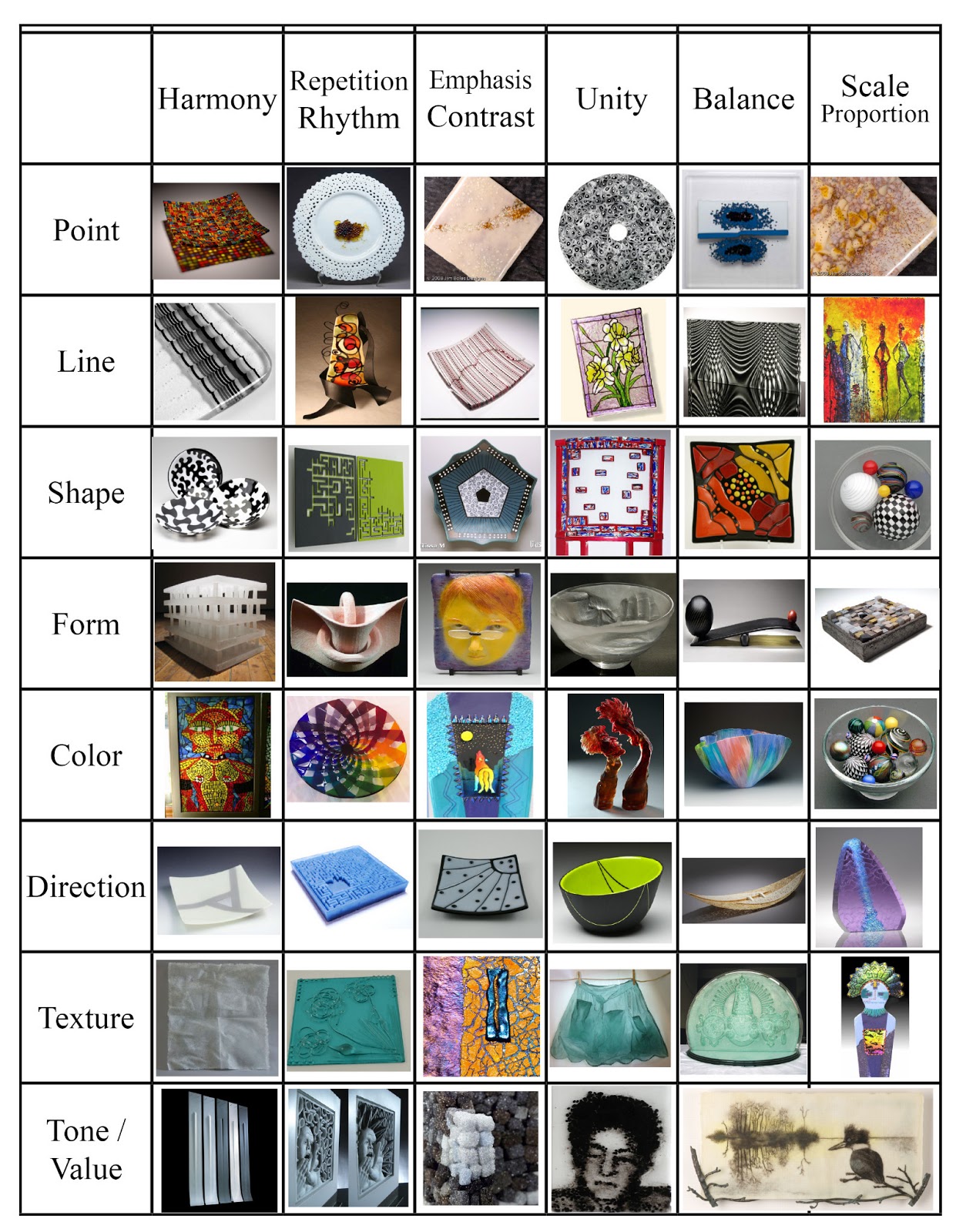
Elements and principles of design garetsg
Aug 17, 2017 3 min read Elements of Design: Value Value is the lightness or darkness of a hue (color). Hue will be discussed in the next section. For now I will stick with value It is easier to find the value of some hues than other ones. If you are working with black, white, and gray it's very easy.
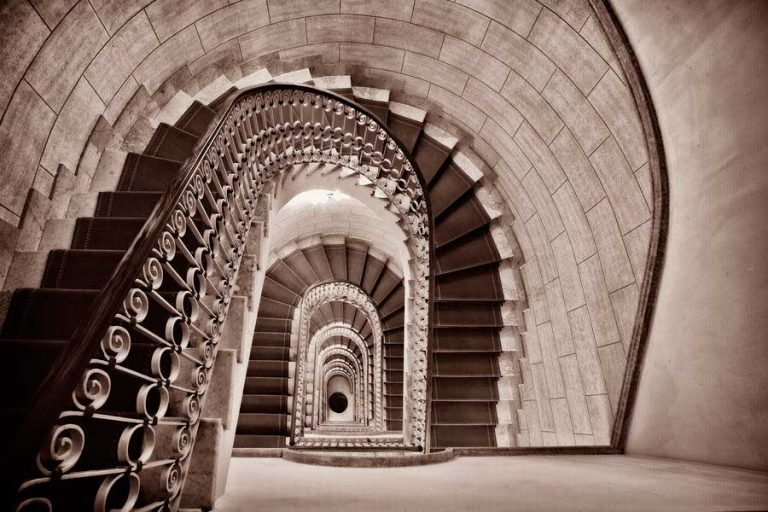
Elements of Art and Design line, shape, space, value, color and
An element of design value is a fundamental yet frequently disregarded facet of the design process that we are discussing. 'Value' pertains to the degree of luminosity or obscurity that a color possesses within the domain of graphic design. The dynamism, substance, and mood of a design are determined by this element..
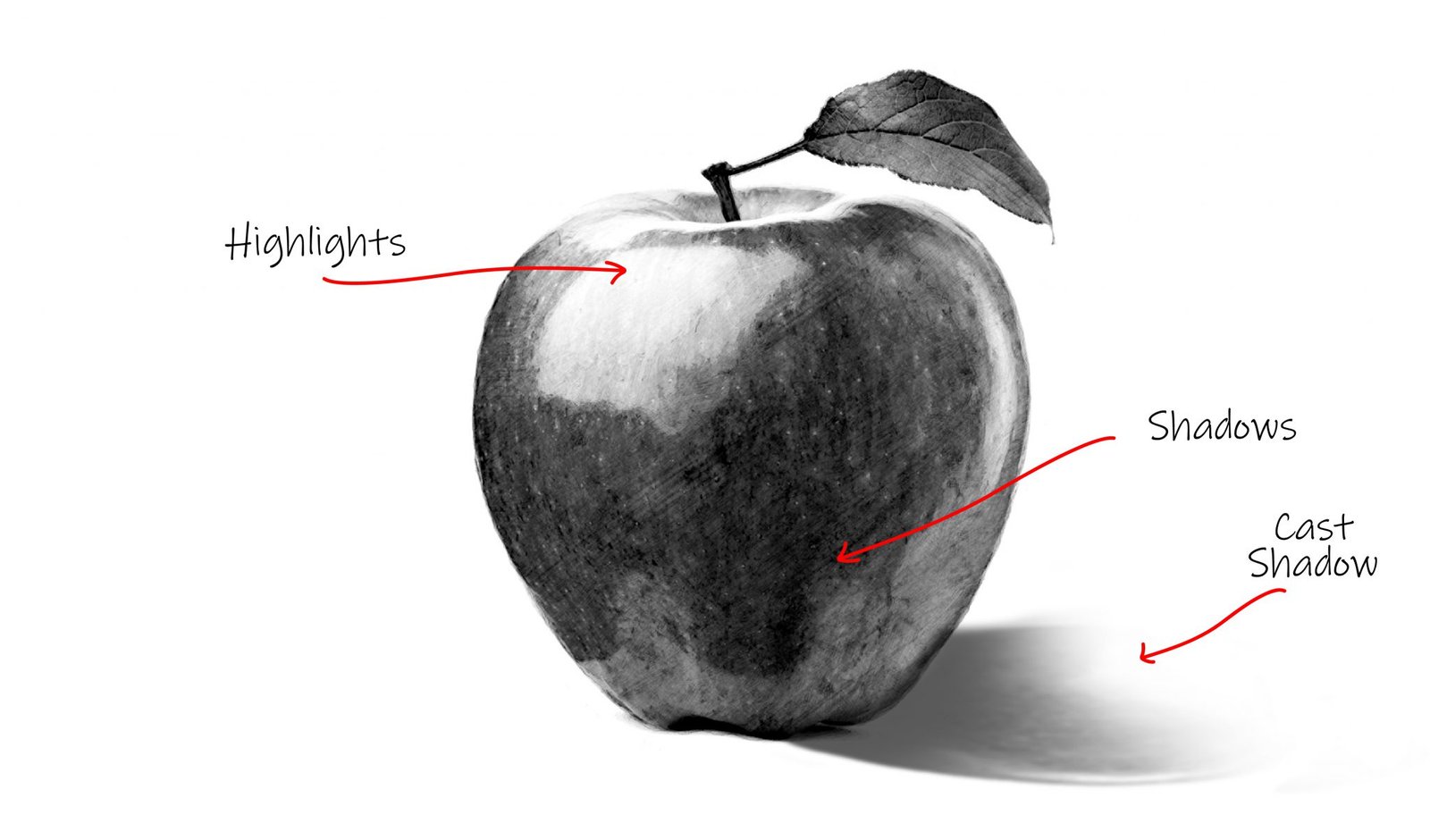
The 7 Elements of Art Value Lillian Gray Art School
13. Grid. Think of a design grid like the foundation to a house - it's a crucial first step in allowing for you to build a functional, and beautiful final product. It signals to the builder/designer where certain elements should be placed, what should align with what, and provides a general outline for construction.

Value designs Art Curriculum, Homeschool Art, Elements And Principles
Element 1: Line. How to Apply the 7 Elements of Design to your Work. Element 2: Shape. How to Apply the 7 Elements of Design to your Work. Element 3: Space. How to Apply the 7 Elements of Design to your Work. Element 4: Texture. What is Value? Value simply refers to how light or dark design elements appears.

Value is an element of design defined as the LIGHTS and DARKS in an
The elements of design refer to the concepts and fundamentals that make up any painting, drawing, graphic design, etc. An understanding of these design concepts and elements are necessary so that as. Value refers to the lightness and darkness of a color. Value is compared on a scale from White to Black. The lighter a color, the higher the.

Jon Allison Designs Value Scale Value in art, Scale art, Elements of art
Value: In design, value refers to the lightness or darkness of a color. The values of a color are often visualized in a gradient, which displays a series of variations on one hue, arranged from the lightest to the darkest. Artists can use the various values of color to create the illusion of mass and volume in their work. 4.
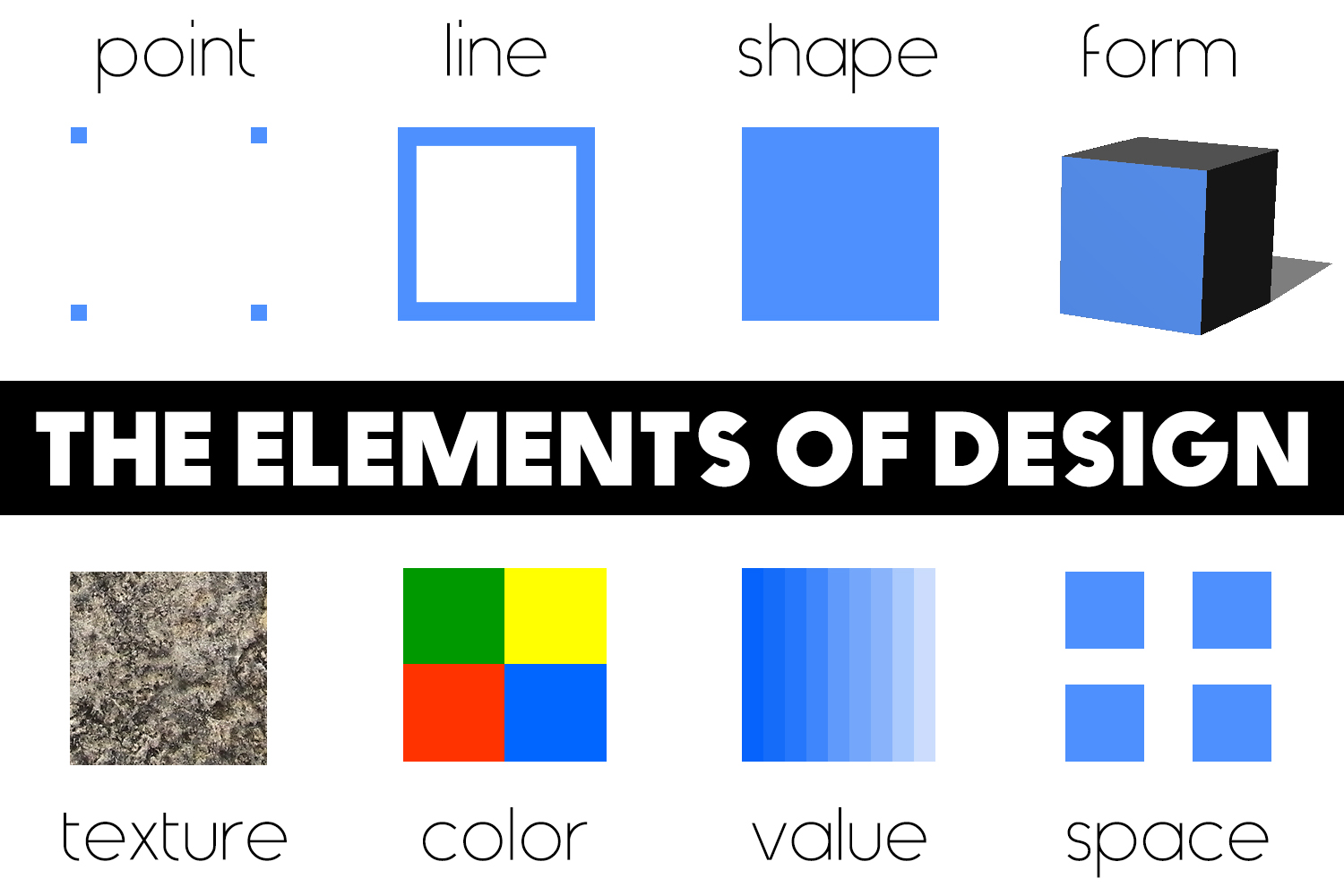
Elements of Design OnlineDesignTeacher
Line. Great use of simple lines to create a minimalist design for an architecture firm. Via -Z-. The building's edge creates a stunning visual line in this webpage design. Via Hitron. Lines enclose and contain the parts of a design by creating outlines. They can be smooth, rough, continuous, broken, thick or thin.

All About Value in Art Light and Dark Understanding the Elements of
A continuous area or expanse surrounding or enclosed by mass (holes and cavities) An enclosed volume or three-dimensional body of matter making up the area of an object. A line is the path of a point, or the connection between two points. Lines can be made on their own, or they can be created where two shapes meet.

History of Arts and Design Element of Art
1. The value of an element is how light or dark it appears. Value is an element's degree of brightness or blackness. It is among the most crucial factors to take into account when using design components since it may significantly alter how an element is seen.

Value ElementsofDesign
Elements of Design: HUE, VALUE and INTENSITY. January 29, 2016December 1, 2020 Aiii. Your teacher Eilee George here, with a lesson on color. One of the most obvious properties of a painting is color. Artists (and scientists) have analyzed and categorized them in various ways, in order to understand working with different aspects of how color is.
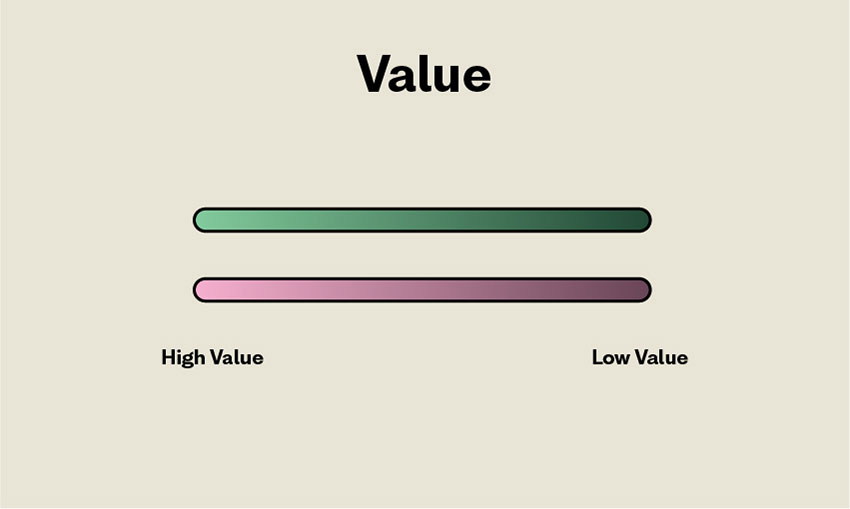
Understanding the Basic Elements of Design and Its Importance
All designs boil down to the most basic elements: lines, shapes, color, space, type, texture, and motion. We discuss how & why they're important. Russian painter Wassily Kandinsky used to say that everything starts from a dot. In digital design, a dot is an intersection of lines and, thus, the most basic element.

Pin on Examples of Principles/ Elements
All visual creatives--from fine artists to graphic designers--draw upon design principles to strengthen their artistic ability. There are fundamental principles of design that operate in tandem with concrete elements of visual design. Seven of these essential elements of design are: line, color, shape, form, value, space, and texture.
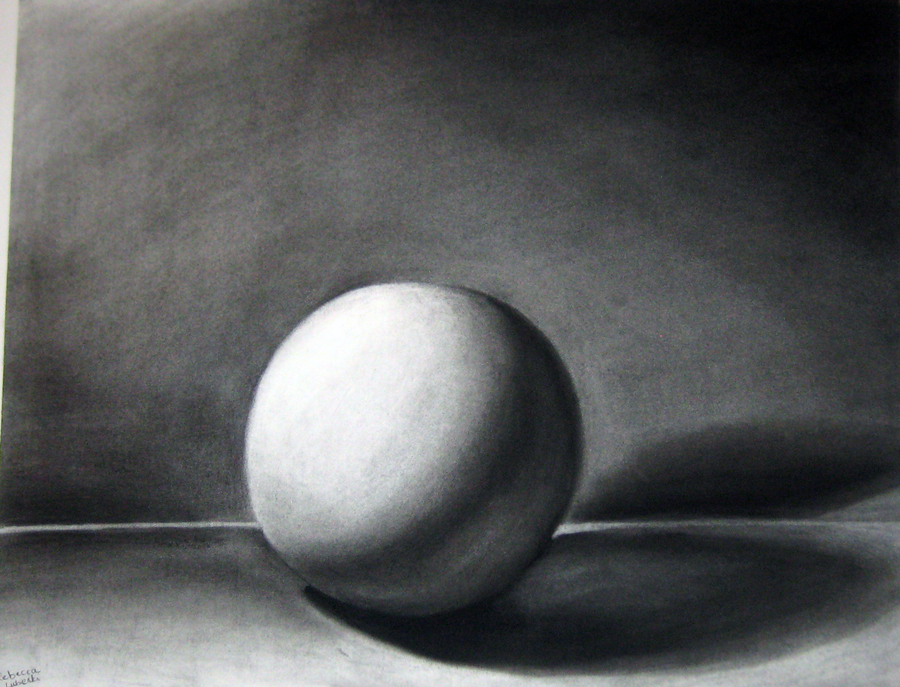
UNDERSTANDING VALUE for the BEGINNER The Painted Canvas
13. Focus on emotion - the pleasure of use is as vital as ease of use; arouse users' passion for increasing engagement. 14. Use "less is more" - make everything count in the design. If functional and aesthetic elements don't add to the user experience, forget them. 15.

Elements of Art and Design line, shape, space, value, color and
December 9, 2009 Share So far in this series we've looked at Balance, Proximity and Contrast as principles of design. You've seen how applying these concepts can help you organize your.